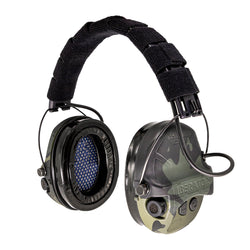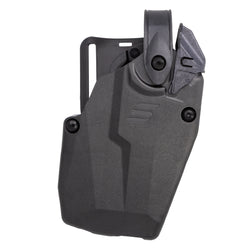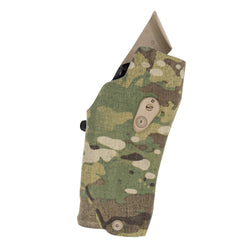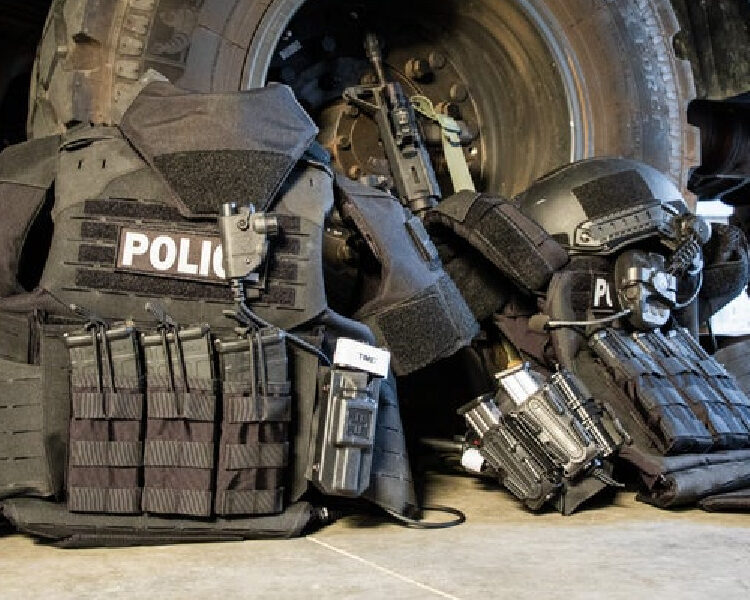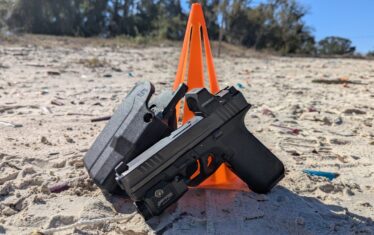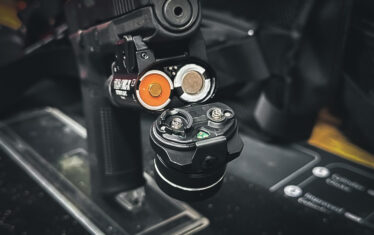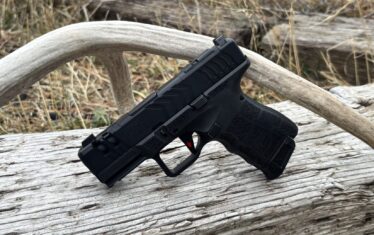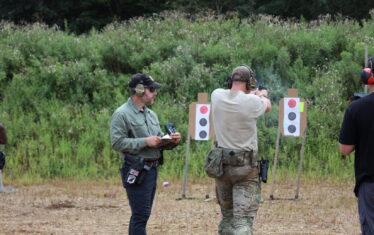When it comes to body armor, there’s really no margin for error. Whether you’re in law enforcement, the military, or a responsible civilian, you know how high the stakes are, and your body armor needs to perform. You need confidence that when things go sideways, you’ll actually have a fighting chance at stopping a threat, taking a win over the bad guys, and going home to your loved ones at the end of the day.
Body armor. Life and death. Responsibility.
That’s non-negotiable, and it’s exactly why the NIJ Compliant Products List (CPL) exists.
Maintained by the National Institute of Justice (NIJ), the CPL is essentially the gold standard for armor products, separating which body armor models have passed rigorous testing and meet strict federal performance requirements from those that haven’t.
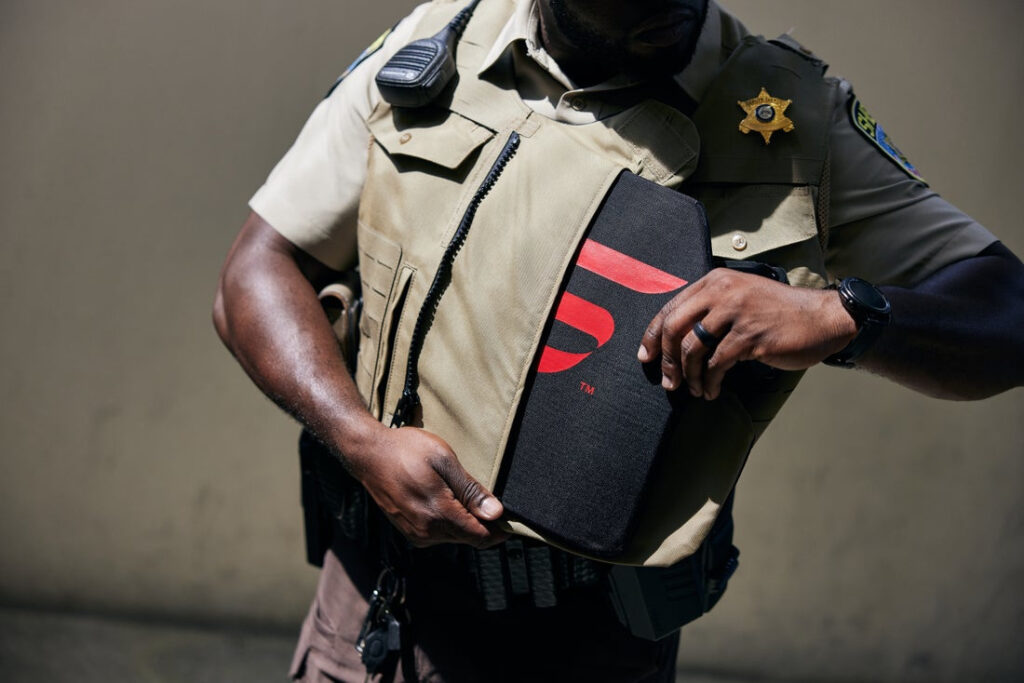
Think of it as the ultimate seal of approval for body armor. If it’s on the list, it’s been put through its paces, stretched to its absolute limits, and proven to do the job. If it’s not on the list… well, you get the point.
But what exactly is the CPL, and why does it matter so much?
In a nutshell, the CPL helps you cut through the noise, giving you a verified list of products that meet national standards for ballistic resistance. It’s not an over-hyped gimmick, nor is it some highly coordinated marketing campaign.
It’s science. And, above all else, it’s a way of keeping armor manufacturers honest and accountable.
But let’s break it down a bit and talk about it in more detail so you can really get the whole picture and make informed, confident choices about your ballistic protection. Whether you’re outfitting yourself or an entire team, understanding the CPL could spell the difference between life and death.
The National Institute of Justice (NIJ) and Body Armor Standards
Entire articles, like this one, have been written on the National Institute of Justice (NIJ) and its role in body armor certification.
It’s a big friggin’ deal, and there’s a lot to it. But as an oversimplification, the NIJ standard, which was first established in 1972, is a strict set of clear and measurable criteria for body armor performance under ballistic threats.
The goal is to ensure that body armor can reliably (and consistently) stop or significantly reduce the impact of bullets and other threats. This maximizes the chance of survival and minimizes the risk of significant injuries to peacekeepers, soldiers, and responsibly armed citizens.
But it doesn’t stop there. This means the armor must prove it can perform after exposure to temperature shifts, moisture, and rough handling. These are all real-world factors that can (and do) affect performance in the field.
To that end, the NIJ is the sole agency tasked with certifying body armor and is the driving force behind the CPL. A heavy responsibility they don’t take lightly.
Beyond the Standards
The NIJ’s work extends beyond just setting and maintaining body armor standards. They’re also deeply involved in programs that highlight the importance of certified armor products. This includes programs like the Safariland SAVES club, which tracks and documents the lives saved by NIJ-certified body armor.
These real-world testimonials serve as powerful evidence of the effectiveness of NIJ-compliant armor, building confidence and trust for both armor users and those responsible for its procurement.
Why Does The Compliant Products List Matter?
Imagine you purchase a set of plates that are advertised as “NIJ Compliant,” only to discover later that they have never actually been certified by the NIJ. Instead, some rogue (probably Chinese or otherwise foreign) company has slapped a “certified” sticker on ’em and called it good.
Unfortunately, this situation is an everyday reality (more than you might think) in the unregulated corners of the body armor market. These “counterfeit” products provide a false sense of hope. And worse, it could get people killed.
The CPL list and NIJ standards, however, aim to avoid such issues.
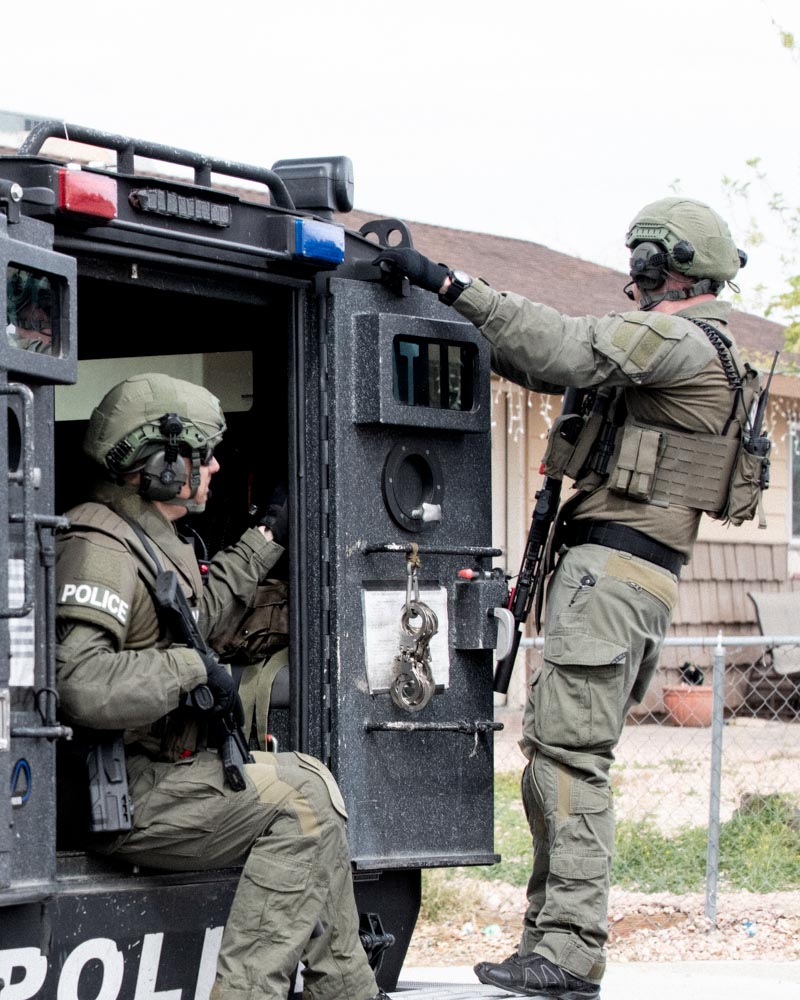
That is to say that the NIJ standards are not just a bureaucratic formality or some glorified rubber stamp. Instead, they represent an exhaustive, multi-faceted testing and certification process that’s designed to push armor to its limits.
This involves detailed ballistic testing against a variety of threat levels and simulating real-world conditions.
When armor undergoes this process, it’s not just to understand whether or not the armor can stop a bullet. Instead, these tests are designed to push armor products to their absolute limits. They ensure the armor can withstand multiple impacts, environmental stressors, and the general wear and tear of real-world operational use.
Even after initial certification, manufacturers are held to continued standards. The NIJ conducts random follow-up inspections and testing on production samples. This ensures that the products being marketed and sold still match what was originally certified.
In other words, just because an armor product passed once doesn’t mean the manufacturer gets a free pass forever. Ongoing compliance is a big part of the deal. When an armor product is officially listed on the CPL, it’s a testament to its proven capability. This means it has successfully passed rigorous, controlled laboratory tests.
The CPL and Public Trust
Without consulting the CPL and doing your due diligence when purchasing armor products for yourself or your agency, you run a significant risk of acquiring or issuing armor that could be more of a liability than an asset.
Non-certified armor might appear similar to legitimate products. Shoot, it might even feel more substantial than its certified counterparts.
A false sense of security, however.
Without the rigorous validation of the NIJ, those knock-off wannabes haven’t proven their ability to withstand the very impacts they claim to stop. It’s an untested gamble. And with the fragile balance of life and death on the line… well, it’s not a bet I’d take.
Nuff said.
NIJ Certification: How Body Armor Gets on the CPL List
Adding an armor product to the CPL isn’t an automatic process, nor is it guaranteed. It’s a competitive and demanding process that begins with the manufacturers themselves. They must voluntarily submit their products for evaluation, which is typically regarded as a commitment to verifiable quality and safety.
This means the NIJ doesn’t proactively test every piece of armor available on the market; they only evaluate what is formally submitted for certification.
The Meticulous Testing Process
Once a product is submitted, the armor is subjected to a comprehensive testing regimen conducted by independent, NIJ-accredited laboratories.
Their role is to put the armor through its paces, simulating real-world ballistic impacts in a highly controlled environment.
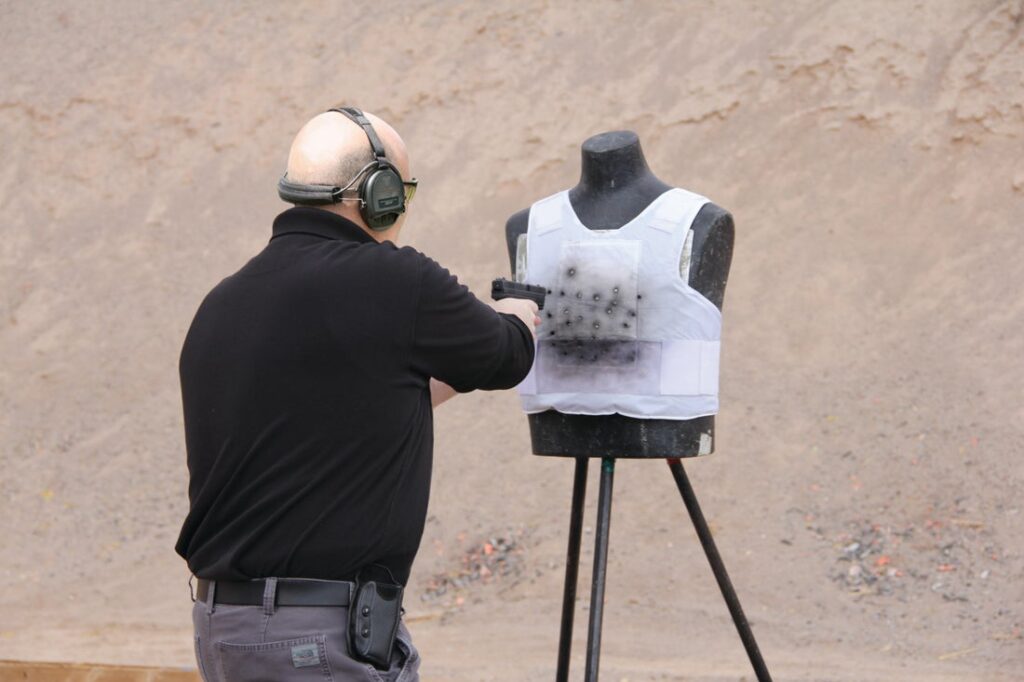
In a general sense, the goal is to assess whether the armor successfully stops the rounds without penetration and, equally important, controls blunt force trauma to the wearer within safe, established limits.
This blunt force trauma assessment is critical, as even a non-penetrating impact can cause severe internal injuries if the energy transfer isn’t adequately managed by the armor.
Level-Based Testing
Every armor model is meticulously tested against the precise threat level it claims to protect against. For instance, soft armor might be tested against Level II or IIIA threats, which typically involve various handgun rounds.
Hard armor, such as Level III or IV rifle plates, would be tested against bigger, faster, and harder-hitting centerfire calibers, such as 5.56x45mm NATO, 7.62x51mm NATO, and even .30-06 Springfield.
The NIJ has meticulously defined minimum performance standards for each level, detailing the specific ammunition types and velocities the armor must withstand without failure. This ensures that a Level IIIA vest, for example, will consistently perform against a .44 Magnum round as expected, regardless of the manufacturer.
Obtaining and Maintaining CPL Certification
Only after an armor product successfully passes all of these tests and checks all the boxes does the NIJ officially certify the armor and add it to the Compliant Products List. This certification isn’t a “set it and forget it” event, however.
Much like the NIJ Standard, the CPL is a living document that is constantly being updated as new products are added or, in some cases, removed.
CPL Product Removal
Removal of an armor product from the CPL can (and does) occur from time to time. If an armor model fails a subsequent re-test, if a manufacturer implements changes that alter the product’s protective qualities, or if the initial certification period expires without renewal, that model can be removed from the list.
In this case, the NIJ will provide the manufacturer with a removal notice, and the CPL database will be updated. Reasons for removal are not always shared with the public, however.
Further, it’s usually advised that you contact the manufacturer to determine why it was removed and temporarily cease use/recall from service any armor product that has been removed from the CPL until it is recertified.
This rigorous, ongoing process is fundamental to ensuring the CPL remains a reliable, current, and trustworthy reference for anyone making critical decisions about body armor products for ballistic protection.
It’s a testament to the NIJ’s unwavering commitment to maintaining the highest standards of safety and performance in body armor.
Of course, this is an oversimplification. But you get the idea.
Where to Find the Official NIJ CPL Body Armor List
The NIJ understands the critical importance of accessibility when it comes to vital safety information. As such, the CPL is maintained as an easily accessible, up-to-date, and publicly available online database.
Navigating the CPL Database
The online database is actually relatively user-friendly. You can search by specific terms or simply click through each page. The database provides easily searchable information, including the manufacturer name, model number(s), armor type, certified threat level, and current certification status of each armor product.
That’s really all there is to it. Like I said, it’s pretty user-friendly.
How to Check If Your Body Armor Is on the NIJ CPL List
Verifying whether your body armor is truly NIJ-compliant is a straightforward process, but it demands careful attention to detail.
It’s a quick and relatively painless process, but let’s break it down anyway.
Check the Armor Label
Start by locating the official label or tag inside your vest or on your plate carrier. This label should clearly display the manufacturer’s name, the specific model number of the armor, and its certified threat level (e.g., “NIJ Standard-0101.06, Level IIIA”). This label is your initial point of reference.
Be wary of labels that are generic, look homemade, or lack specific NIJ standard numbers.
Cross-Reference with the NIJ CPL Database
After you’ve looked at the label on your armored product, you’ll want to access the official NIJ CPL database online, where you’ll input the manufacturer’s name, the model number, and the stated threat level into the search fields.
Confirm the Match
If you find a match in the CPL database, meaning the manufacturer, model number, and threat level precisely align with what’s on your armor’s label, and it shows an “active” or “certified” status, then you can be confident that your armor is officially NIJ-compliant.
If not, your armor is not currently compliant, and further investigation may be required to determine if it ever was, and if so, when.
NIJ Compliant vs. NIJ Certified: Understanding the Nuances
It’s critical to understand one critical distinction: just because a manufacturer markets armor as “NIJ compliant” or “tested to NIJ standards” does not automatically mean it’s officially certified and listed on the CPL.
These phrases can be misleading. A company might have conducted its own internal testing or even paid a third-party lab to test its product according to NIJ methods.
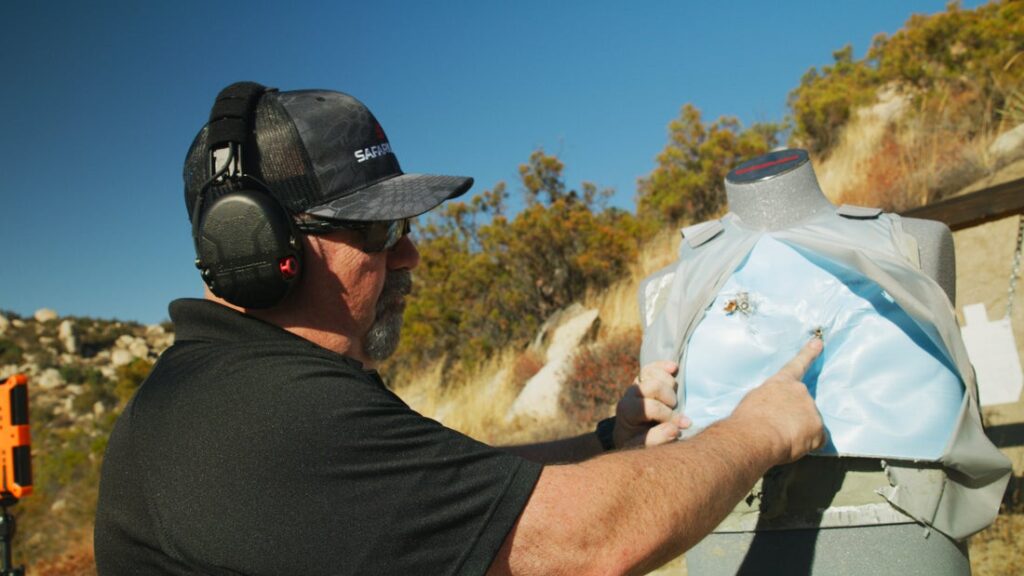
However, this private testing does not equate to official NIJ certification. The armor hasn’t undergone the independent, rigorous vetting and approval process directly overseen by the NIJ itself.
Because official certification is a voluntary process for manufacturers, the CPL is the only official, publicly verifiable list you can truly trust for NIJ-approved body armor.
That is to say that if you’re procuring gear for a team, department, or even just buying armor for yourself, verifying it’s listed on the CPL is kind of non-negotiable.
This single step can prevent incredibly costly mistakes, protect you from liability, and, most importantly, ensure your personal protection is legitimate and proven.
CPL List FAQs: NIJ Body Armor Certification Explained
To further clarify common questions about the Compliant Products List and body armor compliance, here are some frequently asked questions and their straightforward answers:
Is my armor NIJ certified?
The only way to definitively confirm is to look up the manufacturer, model, and threat level of your armor on the official NIJ CPL database. If your specific armor model isn’t listed with an active certification, then it is not officially NIJ-certified.
What’s the difference between “NIJ listed” and “NIJ tested”?
“NIJ listed” means the product has successfully passed the official, rigorous NIJ certification process and is formally included on the CPL.
“NIJ tested” is a more ambiguous term. It typically means a product was tested according to NIJ methods (perhaps by the manufacturer or a third party), but it has not undergone the full official NIJ certification process and is therefore not listed on the CPL.
Do all armor makers submit products to the CPL?
No, submission for NIJ certification is entirely voluntary. Some manufacturers opt out of the official certification process to save on time, cost, or because their products may not meet the NIJ’s stringent standards.
However, this means their products aren’t officially certified or validated by the NIJ and should be avoided at all costs.
Can armor be NIJ-tested but not appear on the CPL?
Yes, absolutely. As mentioned earlier, some armor may undergo internal testing by the manufacturer or be tested by independent third parties following NIJ methods.
However, if that product does not go through the official NIJ certification process, it will not appear on the CPL.
Does the NIJ update the CPL regularly?
Yes, the CPL is dynamic and updated very regularly. New products are added as they achieve certification, and others are removed as needed.
Checking the most current version of the CPL is crucial before any purchase or issuance.
What happens if armor is removed from the CPL?
Removal from the CPL typically indicates that the armor no longer meets current NIJ standards, the product has been discontinued by the manufacturer, or its certification has simply expired without renewal.
In such cases, agencies should immediately review or replace such gear, and individuals should strongly consider doing the same, as its protective capability is no longer certified by the NIJ.
Does the CPL include both soft and hard armor?
Yes. The CPL is comprehensive and covers all types of ballistic protection, including soft armor (like flexible ballistic vests worn under or over clothing) and hard armor (such as rigid rifle plates inserted into plate carriers), across all certified threat levels (e.g., Level II, IIIA, III, IV).
Is older armor still compliant if it was once listed?
Not necessarily. While it might have been compliant at one point, body armor materials can degrade over time due to wear, environmental exposure, and even storage conditions.
Furthermore, NIJ standards themselves evolve periodically to address new threats or improve testing methodologies. Always verify the current certification status and any expiration dates for your specific armor model on the CPL.
Can civilians buy armor on the CPL List?
In most states in the U.S., yes, civilians are legally permitted to purchase body armor that is listed on the CPL. However, laws regarding body armor possession, use, and sales vary significantly by state and sometimes by local jurisdiction.
Additionally, some specific products or threat levels may be restricted or prioritized for law enforcement or military use by manufacturers. It is always advised to check your local and state regulations before purchasing body armor.
How do I know if a vest labeled “NIJ Certified” is actually on the CPL?
The only definitive way to confirm is to verify the manufacturer, model number, and stated threat level of the vest independently in the official, publicly accessible NIJ CPL database. Never rely solely on marketing claims or a label that just says “NIJ Certified” without cross-referencing it with the official list.
Final Thoughts
In a world where lives depend on split-second decisions and trustworthy gear, body armor is far too important to take at face value. Marketing claims, fancy labels, and vague company promises aren’t enough. Especially not when your safety, or the safety of others, is on the line.
That’s why the NIJ’s Compliant Products List (CPL) matters. It holds armor manufacturers accountable, sets real performance benchmarks, and helps you cut through a sea of lookalikes and knockoffs.
It’s gospel.
The certification process is rigorous for a reason. It’s saving lives. Literally.
So, take the time. Read the CPL. Understand how armor gets on that list. And just as importantly, understand what it means when an armor product doesn’t make the cut.
When it comes to ballistic protection, doing your homework isn’t optional. It’s part of the responsibility that comes with wearing the armor in the first place. Because real protection doesn’t come from claims. It comes from scientific, bona fide, evidence-based proof. And that’s exactly what the CPL delivers.


